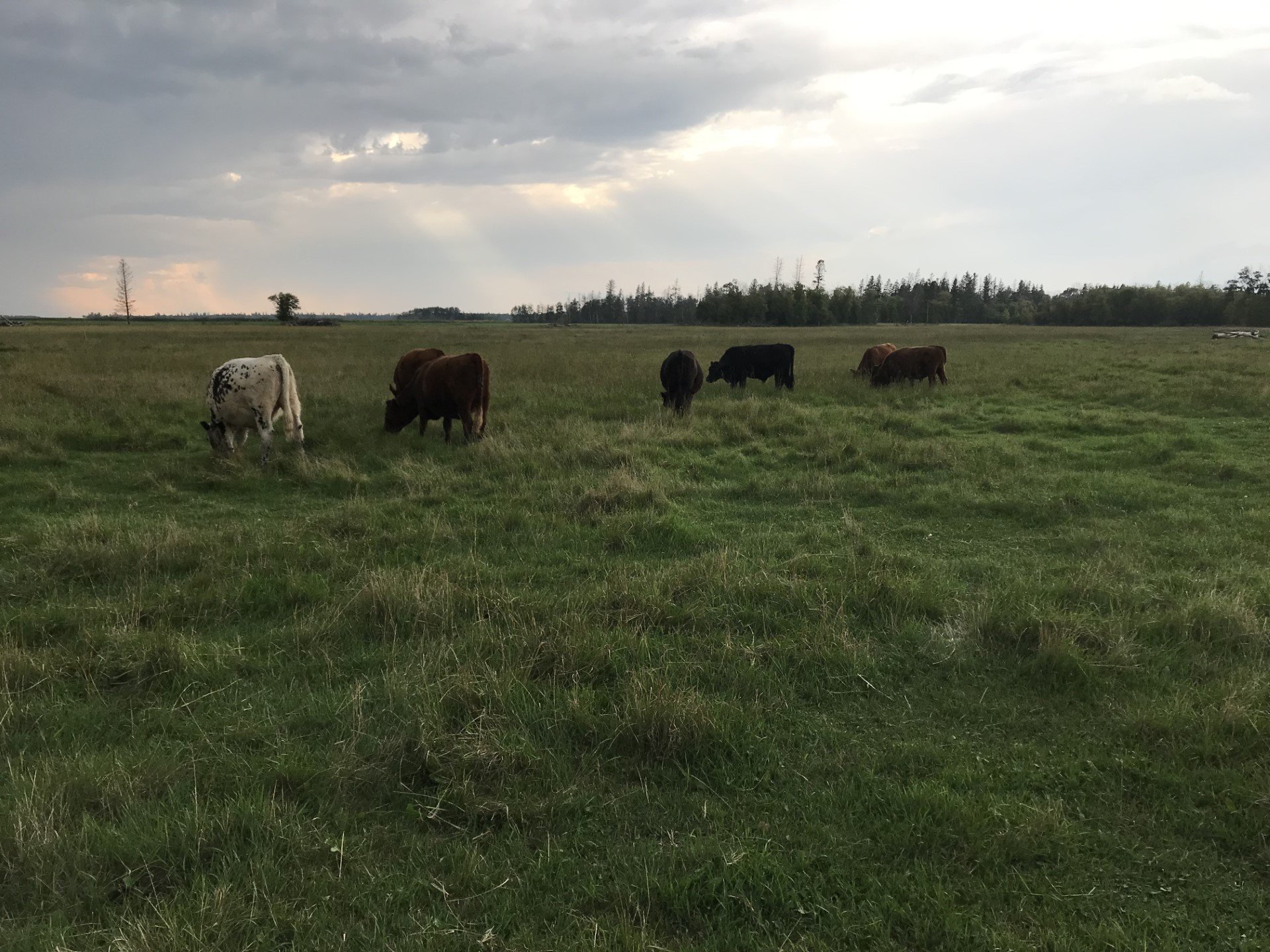Our beef…
Beef cattle are ruminants. A ruminant animal has 4 stomachs, compared to our one, and as such, they are able to digest grasses and legumes efficiently. With the help of their ruminant gut bacteria, cattle can synthesis both energy and protein from a variety of forage sources. Starches, contained in grain, are not a natural part of a ruminants’ diet and cattle eating grain have to develop a new set of micro-organism in order to digest this form of food. This also will change the pH of the stomach and this change can lead to an environment that can foster bacteria that can be harmful to us.
Our cattle are GRASS-FED, which means that they are never fed any form of starch in their lifetime, from birth to finishing. In the spring, summer and fall they are grazing a variety of green forages including native pasture and sowed annual forage mixes. In the winter, they are fed hay and silage put up during the summer months. Their diet can be varied and include species such as native grasses, alfalfa, clover, forage peas, forage oats, perennial & annual ryegrass, tall fescue, buckwheat, forage radish, turnips, sorghum, and many more. A varied diet allows animals to get a source of a wide variety of minerals and vitamins, as different plant species provide these different nutrients. In addition, this biodiversity is a contributing factor to healthy soils on our farm.
Our cattle are outside their whole life - with fresh air, fresh water, fresh grass. They roam through snow covered landscapes in the winter and hang out in the shade of tress in the summer. We do not hold them in a confined area for any extended periods of time - reducing stress on animals as well as concentration of manure.
We use rotational grazing, moving the cattle regularly from one paddock to the next to allow land that has been grazed to rest. Our grazing periods can be anywhere from a couple of weeks to a day or two, depending on the landscape. Long rest periods allow the land to recover as well as allow natural wildlife to utilize the space without being disturbed once the cows have passed through. Returning animals to the land is one aspect of regenerative agriculture and large ruminants, such as cattle, are integral to a regenerative system.
Calves are born on grass in the late spring and early summer and stay with their mothers on pasture until they are weaned. We wean at just under one year of age, to allow the cows to prepare for the birth of their new calves. These weaned yearlings are placed together on a separate pasture and are kept until they have reached a finished weight. They are fed high quality forage during this time period, and we aim to achieve a finished weight by two years of age.
When fulfilling an order, we select an animal that has reached a finished weight and they are processed at a provincially inspected facility - following government regulations.
